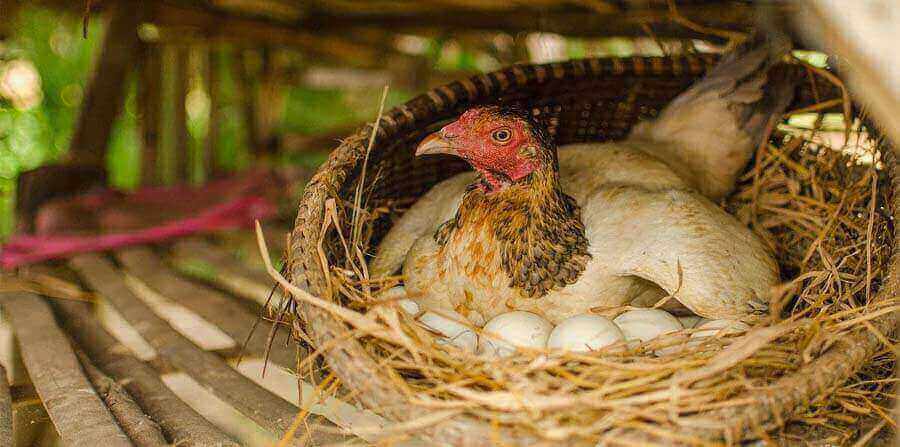In the chicken cage breeding production, the laying rate of laying hens directly determines the economic benefits of our farmers. Most of the egg-producing fatigue diseases are caused by chickens and high-yielding laying hens that have not yet started production, and are most likely to occur in summer, so It is very important for our chicken farmers to prevent egg laying fatigue in summer.
Egg laying fatigue
It is also known as osteoporosis or paralysis of cage-laying hens. It is one of the most serious diseases of cage-bone hens. It is also the most prominent metabolic disease in the production process of laying hens. It is mainly caused by production. Laying hens are paralyzed, dying and egg production is declining.
- Popular features
(1). Occurred mainly in laying hens, with the number of first-time laying hens and peak laying hens more frequent;
(2). Chicken flocks generally die at night. Sometimes the chicken flocks are good during the day, but they are often picked out in the morning when they are fed. Dead chickens often have prominent cloacas and more fat chickens;
(3). Paralyzed chickens continue to appear in the flock. If found in time, pick out the paralyzed chicken to recover;
(4). It often happens when the weather suddenly becomes hot.
- clinical symptoms
Sick and dead chickens have a larger appearance, fuller muscles and prominent cloacas. The higher the yield, the higher the mortality rate. There is no change in eggshell strength, and the egg breakage rate is not high. The food intake of large groups decreased slightly, drinking water increased, individual chickens breathed open, meat fluttered trembling, but no obvious wheezing sound.
The feces are a bit thin, and there is a small amount of yellowish white feces. Feathers are fluffy, the chicken body becomes hot when touched by hand, the comb and the claws become hot; the comb is purple and the skin is red
Most of them have difficulty standing before laying eggs, their legs are soft, and their joints are not flexible. They often support their bodies with hock joints and tails, and some chickens lie on their sides and are paralyzed.
- The cause of the disease
(1). Calcium deficiency and poor physical development caused by various reasons are the direct causes of the disease. When egg production rises rapidly or the peak of egg production, chickens have a large demand for calcium and phosphorus, especially in summer when the temperature is high, which will reduce the chicken’s feed intake, resulting in insufficient feed intake of calcium, phosphorus, vitamins and so on.
(2). In summer, chickens drink a lot of water, which accelerates the movement of intestinal contents and causes a large loss of acidic substances, causing metabolic alkalosis. Due to the accelerated breathing frequency in summer and the loss of a large amount of CO2, the PH value in the body rises, which leads to respiratory alkalosis.
(3). When the house is poorly ventilated and there is no cooling measures, the disease is prone to occur. In hot weather, many chicken farmers turn on the fans to cool down during the day and night when they fill up the light, and often turn off the fans after turning off the lights. After the light is stopped at night, the chickens can not drink normally and are more susceptible to high temperatures.
(4). The stone powder in the feed is too fine, and the stone powder is too finely crushed, which makes absorption fast and excretion fast, and eggshell formation is mainly at night, so when the eggshell is formed, a large amount of calcium has been excreted and caused calcium deficiency. Bone calcium is used to cause fatigue.
(5). The feeding method is unreasonable. In the high temperature environment in summer, the feeding is too frequent, too many times, and the feeding amount is too large. It will increase the burden of the heart, liver and kidney of the chicken, which will cause the disorder of the chicken’s metabolic function and induce the disease.
- Prevention measures
(1). Before laying eggs, laying hens should increase the dietary nutrition level, increase the amount of calcium and phosphorus in an appropriate amount, and usually do blood calcium monitoring. When a soft-shell egg is found, blood calcium should be tested.
(2). Appropriately reduce the feeding density, improve the ventilation conditions of the chicken house, ease the heat stress, and avoid high temperature and hypoxia.
(3). Take the sick chicken out of the cage and raise it to let it move freely.
(4). Change the feeding method of the flock, increase the feeding amount and frequency every morning and evening, avoid feeding during the hottest days, to reduce the heart burden of the body and avoid death caused by heart failure.
(5). Improve the health care prevention program. In the hot summer, the chickens are under high heat stress, improve the chicken’s overall immunity, and use trace elements to participate in the body’s self-regulation, which can greatly enhance the chicken’s anti-stress ability and metabolic balance ability , Thereby reducing the incidence of this disease.


